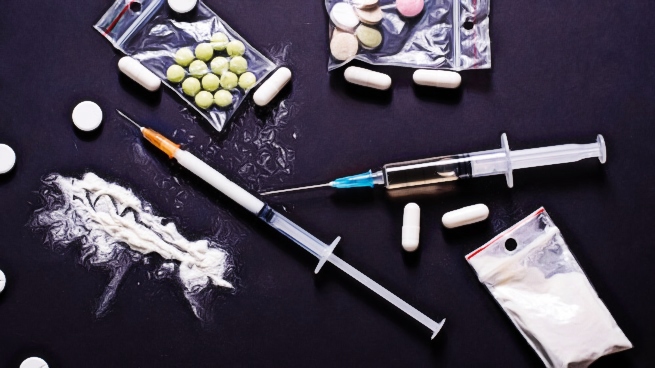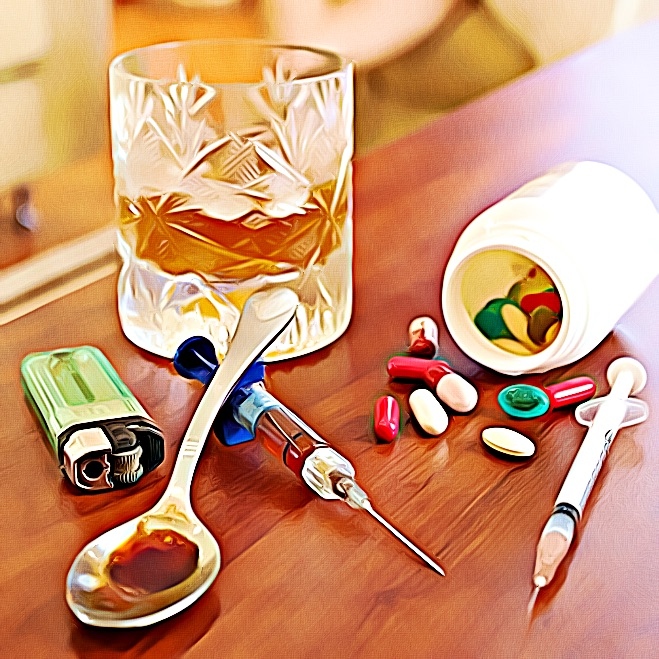Depending on their effect on the human body, drugs are usually categorized unofficially into two groups: uppers and downers. As the names suggest, uppers are stimulants while downers are depressants.
Cocaine and methamphetamine are some well-known uppers. Popular downers include alcohol and opioids. Users often combine these to balance the effects of multiple substances they might be taking. For example, a person hopped up on stimulants may take downers to try and mitigate the effects. Conversely, people might consume an upper to deal with a downer high.
While users might think this is an effective way to deal with bad trips, it can have severe effects on your health. There is little data on how these unregulated substances might interact. They could impact your body in terrifying ways.
Understanding Uppers (Stimulant)
Stimulants or uppers are a classification of narcotic substances that make people feel more alert, focused, and awake. They may also elevate your heart rate, blood pressure, and speed up respiration. In most cases, stimulants interact with the Central Nervous System to produce these effects, but there are some uppers that interact with specific organs, such as the heart or lungs.
Some common stimulants
A few examples of stimulants in circulation are:
- Epinephrine
- Amphetamine
- Dextroamphetamine
- Methylphenidate
- Cocaine
- Methamphetamine
Many of these substances were used medicinally at different points in time. Pseudoephedrine, for example, is a common ingredient in many decongestants. Methamphetamines also began as a treatment for obesity before their distribution was prohibited.

Substances like cocaine, methadone, methamphetamine, and ecstasy (MDMA) are classified under Schedule II—as dangerous drugs with a high potential for psychological and physical dependence.
Legal uses
Many stimulants, so long as they are taken under your healthcare provider’s supervision, can yield positive effects. Adderall and Ritalin, for instance, are made of amphetamine, dextroamphetamine, and methylphenidate but they are effective at treating Attention-Deficit/Hyperactivity Disorder.
In fact, quite a few stimulants are accepted in society, such as caffeine and nicotine. People commonly consume caffeine for functional purposes, especially since it can provide a minor energy boost. Nicotine, on the other hand, is used recreationally.
That being said, the legality of these substances does not preclude the possibility of abuse. It is not uncommon for users of nicotine and caffeine to develop a dependence or addiction to these substances. The one difference between them and other addicts is that these items are readily available and legal.
Side effects of uppers
Users of stimulants, both legal and illegal, have reported experiencing the following effects and sensations:
- Euphoria
- Increased energy
- High self-esteem
- Boosted focus and alertness
- Better sexual performance
- Opened airways and easier breathing
- Suppressed appetite
As with many substances, however, users will gradually develop resistance to these drugs and chemicals. They will need to consume more and more to achieve these effects, which may eventually lead to addiction and other long term effects, such as:
- Aggression
- Psychotic behavior
- Malnutrition
- Blood vessel damage
- Kidney damage
- Lung damage
- Stroke
- High blood pressure
While the exact time frame varies from person to person, it can take a long time for these stimulants to leave an individual’s system. Amphetamines, for example, can show up in a urine test within three days of the last dose; in the blood, it can remain for 12 hours. Methamphetamine can test positive on a urine test for up to six days. A hair test, however, can reveal stimulant use for up to 90 days.
The signs of stimulant abuse
If you suspect that you or a loved one has developed a dependence on stimulants, observe for the following signs:
- Dilated pupils
- Restlessness
- Hyperactivity
- Loss of appetite
- Excessive sweating
- Fidgety or jittery behavior
- Mood swings
- Excess energy or motivation
- Aggressive behavior
- Impulsive behavior
- Anxiety
- Overconfidence
- Deceptive behavior
- Overdose
Identifying the signs of stimulant abuse can be the first step towards recovery for you or your loved one. It can prevent the problem from becoming worse and possibly save a life.
Understanding Downers (Depressants)
Depressants or downers have the opposite effect on the nervous system. They reduce brain activity and function. Users of such substances commonly experience feelings of relaxation and drowsiness. Many also report poorer impulse control while on the drug.
These substances increase the intensity of a naturally-occurring chemical in the brain known as gamma-aminobutyric acid or GABA. The brain normally produces GABA to regulate hormones, neurotransmitters, and other natural brain chemicals that may cause overstimulation.

Some common downers
A few depressants that you might find in circulation include but are not limited to:
- Alcohol
- Heroin, morphine, and other opioids
- Vicodin
- Valium
- Xanax
- Amobarbital
- Phenobarbital
Some of these are legal, others are restricted, and the rest are fully prohibited. Heroin and morphine, for example, belong to the same chemical category of drugs. Both come with incredibly high chances of addiction and a tenuous recovery process. But while morphine can be prescribed by a doctor, the creation, distribution, and ownership of heroin is punishable by law.
Legal depressants
Depressants have a wide range of medicinal uses, which is why plenty of them are legal and available on the market. Morphine, for example, is a powerful painkiller that can help those suffering from chronic pain. There are plenty of opioid variations that were also designed to treat opioid addiction.
Some depressants are also used to help alleviate the symptoms of anxiety disorders. So long as they are properly formulated, regulated, and managed, the use of depressants can be perfectly safe. It should be noted, however, that people taking depressants as medication may experience disorientation and drowsiness in the first few days or weeks of their regimen.
Side effects
We’ve mentioned before that consuming downers can relieve pain, relax the mind, and cause drowsiness. Some other short-term effects of depressants are:
- Memory problems
- Cognitive problems
- Low blood pressure
- Slow heart rate
- Low rate of respiration
- Trouble focusing
- confusion
- Disorientation
- Slurred speech
- Dry mouth
- Vision issues
- Dizziness
- Fatigue
Some long-term problems caused by depressants may include:
- Chronic fatigue
- Liver damage
- Kidney damage
- Weight gain
- Hypersomnia
- Sexual dysfunction
- Depression
- Suicidal thoughts
- Overdose
Without treatment, the abuse of any of these substances will eventually lead to death. It is imperative that a dependence on depressants like opioids and alcohol be addressed immediately. The longer you wait, the more dangerous the recovery process might become.
If you plan to detoxify from these substances soon, make sure to consult an addiction specialist beforehand. A doctor who specializes in addiction treatment will be able to carefully assess your circumstances and prescribe the best treatment program.
The signs of depressant abuse
As with all addictions and dependencies, you must identify the problem as early as possible to prevent any severe health conditions. You must be wary of the signs of depressant abuse, which are:
- Tiny pupils
- Constant sleeping
- Mood swings
- Secretive behavior
- Lack of energy
- Withdrawing from social circles
For many depressants, withdrawal can also begin quickly—in as little as a few hours depending on the person’s intensity of use and physiology. As such, it might also be useful to watch out for withdrawal symptoms, which are:
- Insomnia
- Restlessness
- Shaking
- Weakness
- Nausea
- Vomiting
- Irritability
- Excessive sweating
- Hallucinations
- Anxiety
- Tremors
- Panic attacks
- Depression
- Body aches
- Muscle stiffness
- Heart palpitations
- Tension
- Memory issues
- High blood pressure and heart rate
- Hypersensitivity to light and sound
If you or a loved one is experiencing these symptoms, it might be time to consult a rehabilitation center about recovery programs.
Uppers and downers may have different effects on the body, but neither of them are good for you if they are abused. While some can be used in energy-boosting drinks or painkillers, it is still best to exercise moderation. Even if the substance is legal, the repercussions of abuse are still too great to ignore.
Sources:
https://www.dea.gov/taxonomy/term/346
https://www.dea.gov/taxonomy/term/316
https://www.drugabuse.gov/publications/drugfacts/prescription-cns-depressants
















